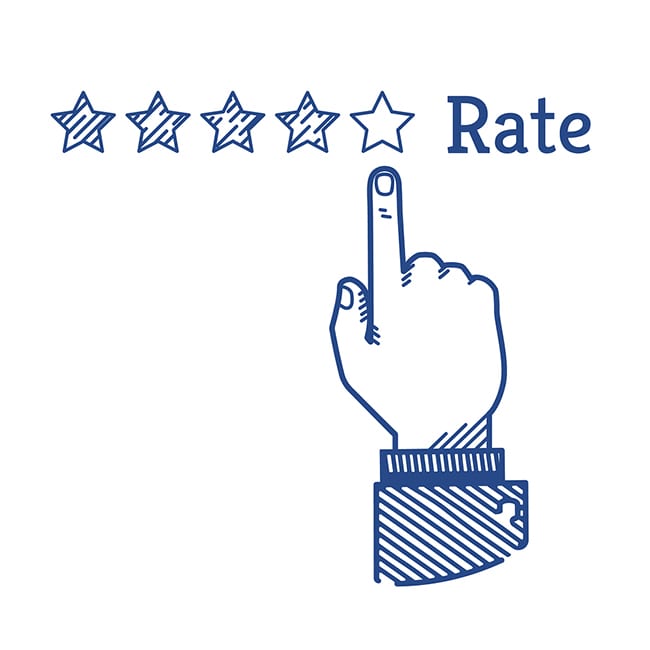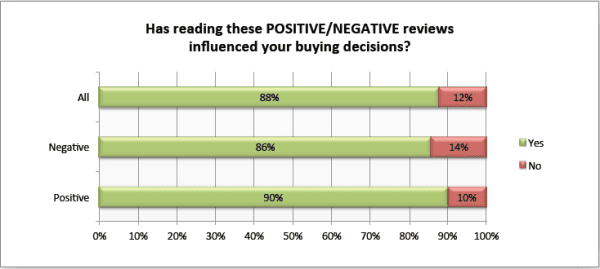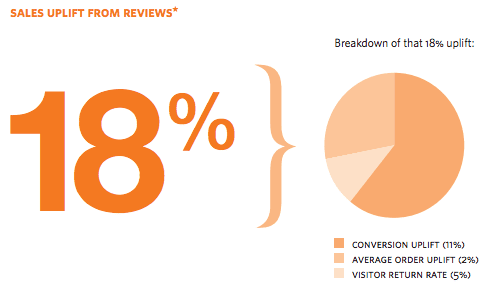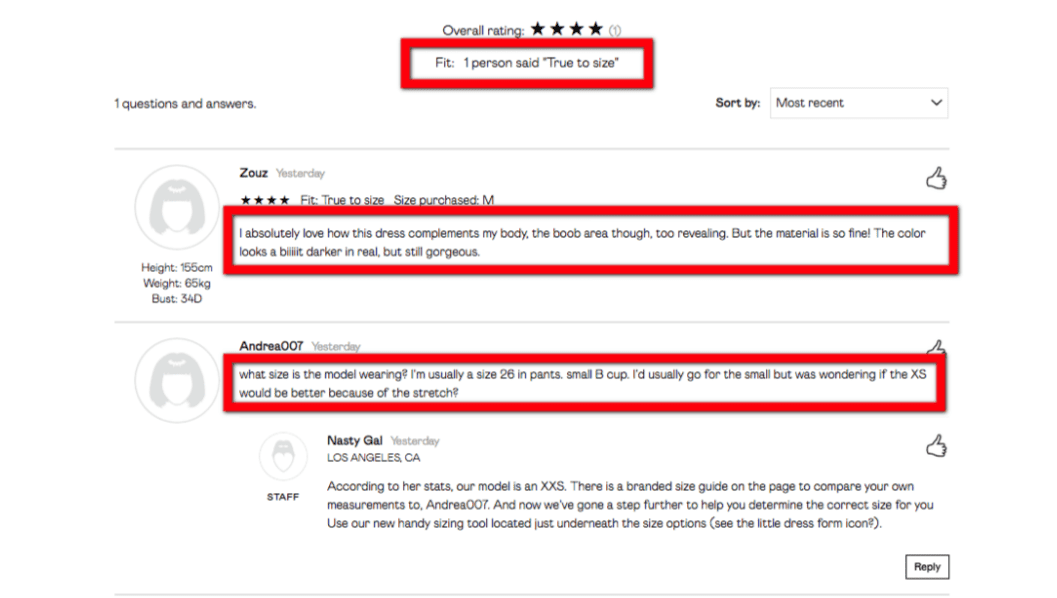Lack of Ecommerce Product Reviews = Less Sales

More Conversions
Online stores all operate under a similar moniker: Spend less and make more. It’s not that different from any other business model. We’re all after the best profit margin, while assuring that it does not come at the cost of a bad product or customer experience.
Did you know that recent studies have found that by adding online product reviews to your store, you can improve conversion rates on landing pages by as much as 58%?
In a recent study that covered millions of reviews spanning billions of product pages, it was found that the average order value increases by 3% or more when these reviews are present on a retailer’s site. Just one review was found to improve conversions by 10%; 30 reviews were found to improve conversions by 25%; more than 100 reviews had the potential to improve conversions by 37%. Overall, product reviews were found to help improve conversions by as much as 58% or more for online retailers. The facts don’t lie: Product reviews on your websites equal more sales.
Improve Trust
Today’s shopper is less trusting than ever before. They worry about having to make a return if the product they purchased does not work out. They also worry about shipping costs, credit card fraud and a number of other things. According to a recent report by Pew, 82% of shoppers say they “sometimes” read a review before making an online purchase, with 42% saying they “always” do.
“A substantial majority of the public now incorporates these customer ratings and reviews into their decision-making processes when buying something new: Fully 82% of U.S. adults say they at least sometimes read online customer ratings or reviews before purchasing items for the first time, including 40% who say they always or almost always do so,” Pew wrote in their report.
Influence Purchasing Decision
Retailers all want more conversions – but getting the customer to click that “buy now” button and follow through without abandoning the cart can be tricky. This is where something as simple as adding a product review plugin can help you convert more of these shoppers before they bounce away from your site and their business is lost for good.
According to a study that was conducted by Dimensional Research, 90% of your prospective customers use product reviews to make their purchasing decision. They want to know what other customers thought of the product, including information about the quality, usability and application of the product. Offering them this unadulterated information goes a long way in influencing the purchasing decision.

Sales Uplift
But what kind of sales uplift can you really expect when you have adequate customer product ratings and reviews in place? According to Econsultancy, a healthy 18%.
“Customer reviews are trusted 12 times more than a marketing piece from an organization,” explains Hunter Montgomery, CMO, HigherLogic. “So let them do the talking.”

A Power Reviews report helps us better understand why sales uplift occurs by providing some key facts about online product reviews. They explain that 86% of consumers consider reviews as an “essential resource” when making a purchase online. What’s more, 56% of them look for online stores that offer online reviews. In short, the vast majority of customers want reviews to be present, and more than half won’t shop at your store if you don’t offer them. But, when you do, sales can increase by 18% or more.
Negative Reviews Count, Too
Now most business owners would scowl at the sight of a negative online product review, thinking that this would be to the detriment of their business model. But as it turns out, negative reviews can actually help you gain more business in the long run. Here are a few reasons why.
As an Imedia publication explains, “Customers need to read reviews before making a purchase, they are looking for what could be wrong with a product. If they can’t find it on your site, they’re going to find it elsewhere.”
Experts generally contend that in order for your sales uplift to improve with ecommerce product reviews, negative reviews of products also need to be present. That’s because shoppers know that no product is perfect, and most want to see both sides of the story before making up their mind. The key is with having more positive reviews than negative ones, or around a 70% (positive) to 30% or less (negative) balance.
Negative reviews help to improve the authenticity of your positive reviews. Without them, shoppers may not believe that the positive reviews are authentic. Also, a negative review may deter a shopper that is a serial returner, which helps you reduce your return rate and improve satisfaction among your general customer base. According to Light Speed Research, shoppers are only 4% less likely to purchase with one negative review present. With five or more they are only 22%, but with three or less they are as much as 39%.

Product Reviews Reduce Returns
The reality is that product returns are one of the costliest aspects of doing business online. The primary reason is the cost of return shipping. Unlike brick and mortar retail stores, where customers bring the product back, online stores have to encumber the cost of the return (or charge the customer and risk decreased loyalty and reduced satisfaction).
The asset that you have with product reviews online is that they can help you reduce returns by educating buyers. While most shoppers are generally satisfied with a majority of the purchases that they make online, reviews that are submitted about products can help those who would have ended up returning the product avoid making the purchase in the first place.
This is especially true with apparel returns, which have the highest rate of returns in ecommerce. As demonstrated for you in the screenshot below, where one customer may place a positive online review about a piece of apparel, another may ask a question or leave an additional review, leading to a retailer responding. At the end of the cycle, a customer who would have ended up placing a return because the product did not fit avoids making the purchase in the first place.

Online Product Review Facts
Before we leave you, we’ll deliver a list of recent product review facts to help empower you to make a revenue-producing decision for your online store.
- 80% of consumers take the time research products online (Oracle)
- 91% of consumers read product reviews on a regular basis (Vendasta)
- 84% of consumer trust in online reviews like they would a friend’s suggestion (Bright Local)
- 70% of consumers will leave a review if you merely ask them to (Bright Local)
- 30% of consumers think reviews are fake if there are no negative reviews (Vendesta)
- 120% of consumers trust product reviews over the description (Social Barrel)
- 10% of your search engine rankings can be influenced by reviews (Web Republic)
- 44% of consumers only trust reviews that are less than 30 days aged (Bright Local)
- 89% of consumers make a buying decision within seven days of reading a review (Hub Spot)
- 18% sales uplift can be obtained with adequate online product reviews (Vendesta)
- 90% of customers look to page one search results to find products (DIY Blogger)

What You Should Do Now
Here are 3 ways ReadyReturns can help you deliver amazing return experiences that eliminate prepaid labels and boxes, delight customers, and protect your margins:
Schedule a Demo – See how ReadyReturns turns product returns into your competitive advantage with “Amazon-like” returns and cost-saving features.
Start Your Free Trial of ReadyReturns (No CC Required) – Set up in minutes. Instantly offer QR code returns, product exchanges, and custom return rules that turn frustrated customers into repeat buyers.
Try ReadyCloud at No Cost – Why manage shipping and returns separately? Get ReadyShipper X, ReadyReturns, and more in one unified platform for seamless fulfillment and order management.
Share On:







